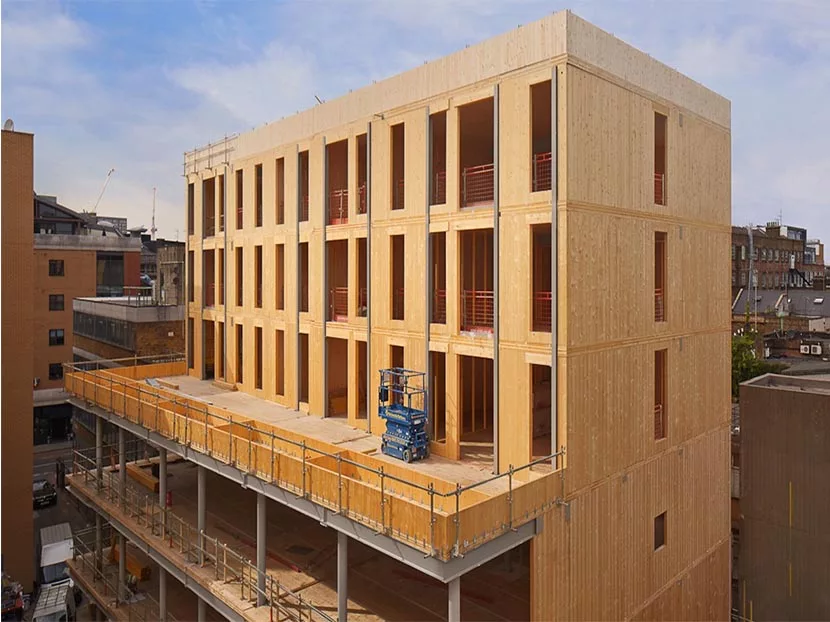The Fire Protection Research Foundation, the research arm of the National Fire Protection Association, has released findings on how exposed timber in high-rise residences might impact fire behavior. The new Phase 2 “Fire Safety Challenges of Tall Wood Buildings” report provides data and insights from six large-scale test burns, and found that the exposed timber did influence the way the fire behaved.
In recent years, economic development officials, architects, designers and the fire service have asked for research related to the fire hazards associated with tall buildings with structural components comprised of engineered wood/cross laminated timber.
Members of the fire service have expressed concerns about wood construction in tall buildings. Currently, buildings featuring wood construction are capped at six floors or 65 feet high, but some are advocating for those heights to be extended to 85 feet high or nine stories. Fire officials cite concerns about the combustible nature of wood; they point to previous research that shows that timber elements contribute to the fuel load in buildings and can increase the initial fire growth rate.
To answer the research needs and address the concerns of the fire service, the goal of the project was to quantify the contribution of CLT building elements to compartment fires and to characterize the fire protection of the CLT structural elements using physical barrier (e.g. gypsum board) for delaying or preventing their involvement in the fire. Design trends could eventually lead architects to leave the timbers partially exposed, prompting fire protection researchers to ask what this could mean for fire growth, heat release, toxicity, and other factors.
The tall wood building project was sponsored by the Foundation’s Property Insurance Research Group through a grant from the USDA, Forest Service. The National Research Council of Canada was contracted to lead the CLT compartment fire study due to their extensive experience and expertise in CLT fire studies.
The NRC executed the test plan with the National Institute of Standards and Technology at their fire lab.
Six simulated studio apartments – each 30 feet long, 15 feet wide, and nine feet high – with four walls and a ceiling were built for testing. Each was filled with typical modern furnishings. The tests were conducted without any sprinklers or firefighting intervention until the end of the tests in order to quantify the CLT contribution to compartment fires (note: in North America, tall buildings are typically equipped with automatic sprinklers).
Each of the test areas had varying levels of exposed wood – two rooms had one wall with exposed timber, one had a ceiling exposed, and one had both. Two were fully encapsulated in gypsum board, and were burned to form a baseline measurement. In two of the four tests, researchers adjusted the amount of ventilation in the room to see how that would impact the fire.
“We had limited information on compartment fires in these types of buildings, so it was a knowledge gap that we were looking to fill,” said Amanda Kimball, the foundation’s research director.
Kimball noted that the data collected from the tests will inform “the fire service, codes and standards bodies, designers, and insurers about possible risks within these structures.”
There are currently no plans for another study. Researchers did note, however, the need to determine how the connectors that hold the timber elements together perform in fire and how holes in the wooden panels – cut to allow for passage of cables, HVAC and other systems – might affect fire behavior.





